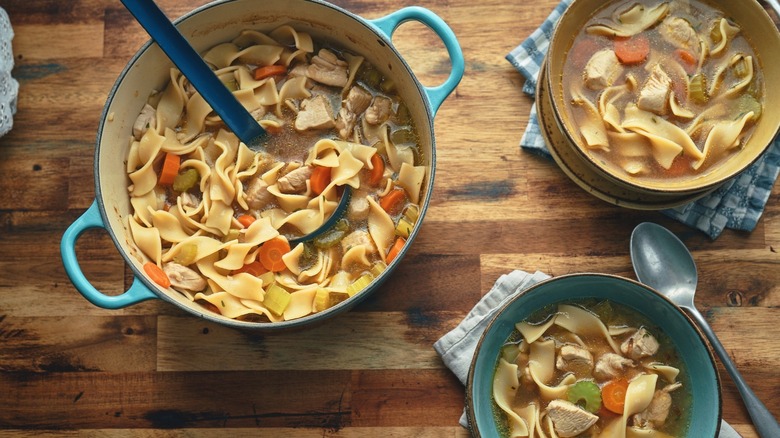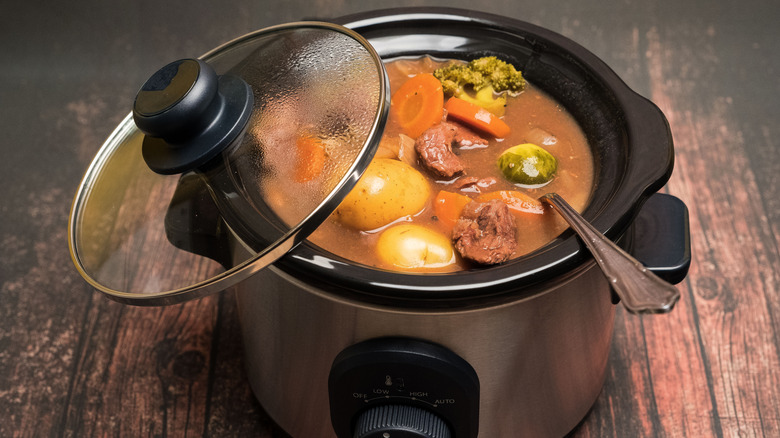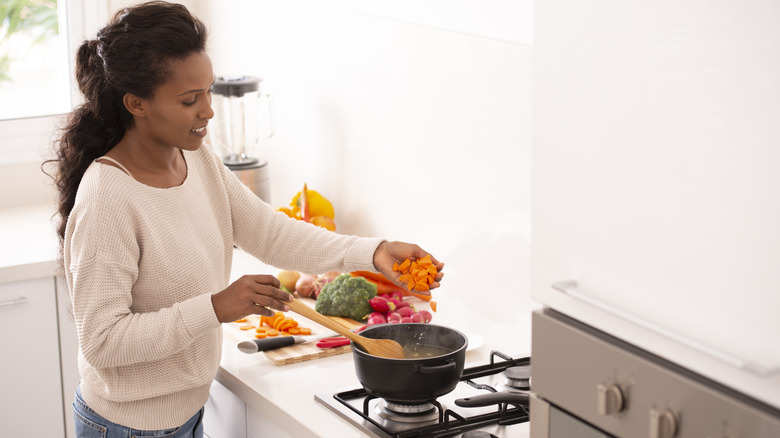Need-To-Know Differences Between Slow Cooker And Stove Top Soup
When you make soup, you want it to taste good and have a balance of flavors — one ingredient should not overpower all others. Also, you want a soup that not only looks appetizing, but has a texture that's appropriate for the type of soup you're making. For instance, if you're cooking a recipe meant to be creamy and smooth, lumps are generally not a good thing to encounter. While the flavor and texture largely depend on the ingredients and how you prepare them, the cooking method can be just as important.
The two most common approaches to making soup are cooking it in a slow cooker or cooking it on the stove. If you're debating on which method to use, there are a few things you should keep in mind. For instance, slow-cooking soup keeps all the ingredients and flavor sealed in, but you have to be careful not to cook it too long because the flavors can get muddled and the texture can become a little mushy. Conversely, cooking soup on a stovetop is a much quicker process that gives you more control to achieve the outcome you desire, but it requires a bit more babysitting.
Making soup in a slow cooker
This style of cooking soup definitely has its advantages, such as ease and convenience — just add your ingredients and let them cook. However, there can be a few disadvantages, as well. For instance, as the name implies, a slow cooker is slow. If you come in from a chilly day and want to warm up, you probably do not want to wait several hours to eat. Also, it is important to understand that even though some recipes may require an eight-hour cook time, you still have to keep an eye on your food because it's still possible to overcook it.
On the positive side, a slow cooker is a sealed environment. This means there's very little evaporation and your food cooks with the help of moist heat. Technically, this means you're actually cooking your food with flavored steam, which helps to seal in flavor while the soup cooks. However, if you take the lid off, the heat and that all-important moisture escape. That means another crucial difference is a slow cooker is designed to be used with the lid on.
Making soup on the stove
Cooking soup on a stove can be much faster than using a slow cooker. In many instances, you can turn the heat up and, depending on the recipe, have a steaming hot bowl on your table in a matter of minutes. However, when cooking on a stove, you will need to tend to the food much more often than you would with a slow cooker. You must monitor the heat, stir the soup, and be careful not to lose too much water because of evaporation. If this happens, the texture will thicken and the flavor will intensify and become more concentrated. This could be a good or bad thing depending on your recipe.
It is also important to remember that you can cook a wider variety of recipes (soup or otherwise) on a stove. Also, since you can modify the heat during the cooking process, you can fine-tune your temperature for specific results. For instance, you can increase the temperature to brown foods you add first, like meat and veggies, then turn the heat down to let the broth simmer.


